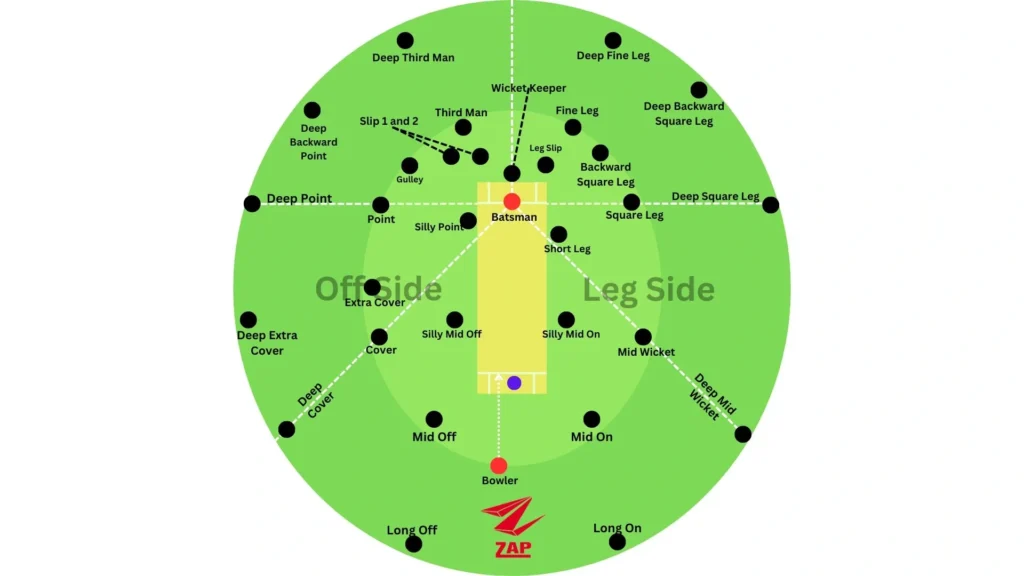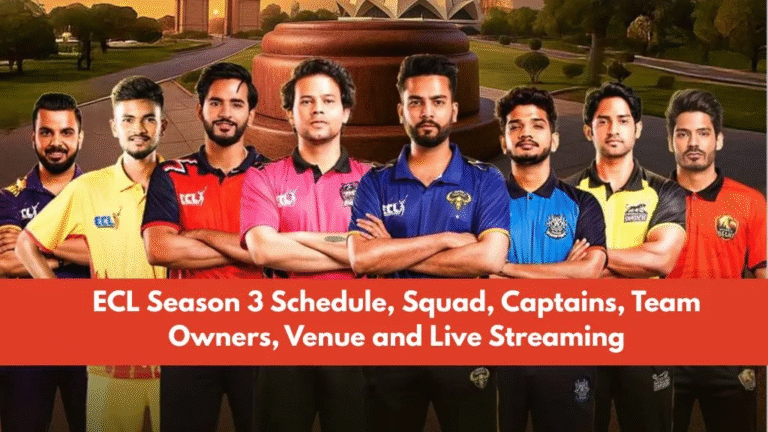
Cricket is not just about batting and bowling — fielding plays a vital role in controlling the game’s flow and creating wicket-taking opportunities. Captains strategically position fielders around the ground based on the bowler’s style, the batsman’s strengths, and match conditions. Each fielding position has a specific purpose, requiring precision, quick reflexes, and awareness. Here’s a look at 10 different fielding positions on a cricket field and their importance:

Also read: Top 10 Famous Cricketers From Bengal
1. Slip
The slip fielders stand next to the wicketkeeper, behind the batsman on the off-side. Their job is to catch edges that deflect off the bat, especially against fast bowlers. This position is crucial in Test matches and during the initial overs of limited-overs games when the ball swings.
Key Skill: Sharp reflexes and safe hands.
2. Gully
Positioned slightly wider than the slips, the gully is placed to catch balls that are edged by the batsman but don’t carry directly to the slips. It’s a key catching position for fast bowlers, particularly against batsmen who play square cuts or off drives.
Key Skill: Anticipation and quick low catching.
3. Point
The point fielder is positioned square on the off-side, perpendicular to the batsman. This player prevents runs from square cuts and late cuts. It’s an important position in all formats, often requiring agile movements and strong throws to the wicketkeeper or bowler.
Key Skill: Speed, reflexes, and accurate throwing.
4. Cover
Located between point and mid-off, the cover fielder guards the off-side area where batsmen love to play elegant drives. The position is vital for stopping boundaries and creating run-out chances.
Key Skill: Excellent anticipation and athletic movement.
5. Mid-Off
The mid-off position is placed straight on the off-side near the bowler. This fielder stops straight drives and provides backup to the bowler. They often act as a communicator between the bowler and captain.
Key Skill: Awareness, fast reflexes, and strong fielding technique.
6. Mid-On
The mid-on position mirrors mid-off but is located on the leg-side. This fielder stops straight and on-drive shots. The position is crucial for preventing singles and catching mistimed shots.
Key Skill: Alertness and quick reactions.
7. Square Leg
The square leg fielder stands on the leg-side, square to the batsman. This position is ideal for catching or stopping flicks and pulls played off the hips. It’s commonly used against both fast and spin bowlers.
Key Skill: Quick footwork and anticipation of leg-side shots.
8. Fine Leg
The fine leg position is placed behind the batsman on the leg-side boundary. It’s mainly a defensive position used to stop balls glancing off the bat or pads. This fielder needs to be ready for quick chases and boundary stops.
Key Skill: Speed and powerful throws from the boundary.
9. Third Man
Located behind the batsman on the off-side near the boundary, the third man position catches edges that go past the slips or gully. It’s especially important in one-day and T20 cricket to stop boundaries from late cuts or edges.
Key Skill: Judging the ball’s pace and angle, plus accurate boundary fielding.
10. Long On and Long Off
Both long on and long off are deep fielding positions near the straight boundaries on either side of the pitch. They are defensive positions designed to stop lofted drives and boundary hits.
Key Skill: Excellent catching ability and strong arm for long throws.
Summary
Fielding positions in cricket are more than just spots on the ground — they reflect strategy, teamwork, and anticipation. From slips hunting for edges to long-on stopping sixes, each position plays a vital role in shaping a team’s defense. A well-set field can pressure batsmen, save crucial runs, and change the course of a match, proving that good fielding truly wins games.






